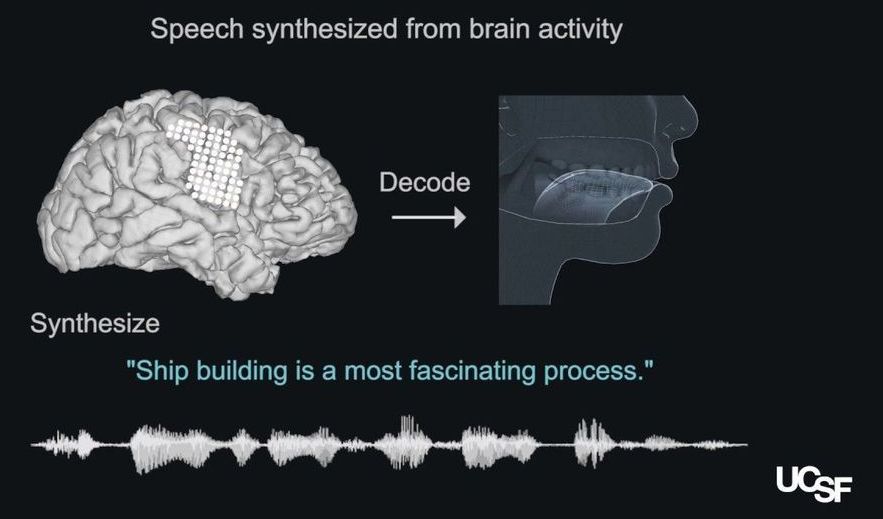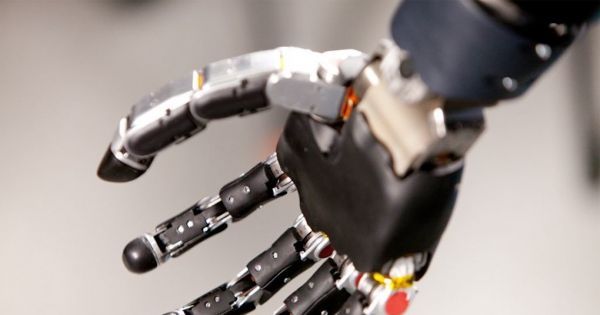Page 8854
Apr 24, 2019
Nanocomponent is a quantum leap for Danish physicists
Posted by Quinn Sena in categories: computing, internet, particle physics, quantum physics
University of Copenhagen researchers have developed a nanocomponent that emits light particles carrying quantum information. Less than one-tenth the width of a human hair, the miniscule component makes it possible to scale up and could ultimately reach the capabilities required for a quantum computer or quantum internet. The research result puts Denmark at the head of the pack in the quantum race.
Teams around the world are working to develop quantum technologies. The focus of researchers based at the Center for Hybrid Quantum Networks (Hy-Q) at the University of Copenhagen’s Niels Bohr Institute is on developing quantum communication technology based on light circuits, known as nanophotonic circuits. The UCPH researchers have now achieved a major advancement.
“It is a truly major result, despite the component being so tiny,” says Assistant Professor Leonardo Midolo, who has been working towards this breakthrough for the past five years.
Continue reading “Nanocomponent is a quantum leap for Danish physicists” »
Apr 24, 2019
Hands On With Seagate’s New IronWolf 110 SSDs
Posted by Shailesh Prasad in categories: computing, electronics
Announced at CES 2019, Seagate is about to ship the first line of SSDs optimized for network server (NAS) workloads. We put a couple of review units through their paces.
Apr 24, 2019
Florida Man Becomes First Person to Live With Advanced Mind-Controlled Robotic Arm
Posted by Quinn Sena in categories: biotech/medical, cyborgs, Elon Musk, robotics/AI
Prosthetics have advanced drastically in recent years. The technology’s potential has even inspired many, like Elon Musk, to ask whether we may be living as “cyborgs” in the not-too-far future. For Johnny Matheny of Port Richey, Florida, that future is now. Matheny, who lost his arm to cancer in 2005, has recently become the first person to live with an advanced mind-controlled robotic arm. He received the arm in December and will be spending the next year testing it out.
The arm was developed by Johns Hopkins Applied Physics Lab as part of their program Revolutionizing Prosthetics. The aim of the program, which is funded by the Defense Advanced Research Projects Agency (DARPA), is to create prosthetics that are controlled by neural activity in the brain to restore motor function to where it feels entirely natural. The program is specifically working on prosthetics for upper-arm amputee patients. While this particular arm has been demoed before, Matheny will be the first person to actually live with the prosthesis. The program does hope to have more patients take the tech for a longterm test run, though.
While the prosthetic device is impressive, it’s not a limitless, all-powerful robot arm. Matheney won’t be able to get the arm wet and is not allowed to drive while wearing it. Keeping a few rules in mind, Matheney will otherwise be free to push the tech to the edge of its capabilities, truly exploring what it can do.
Apr 24, 2019
World’s first malaria vaccine to go to 360,000 African children
Posted by Genevieve Klien in categories: biotech/medical, health
Some 360,000 children a year in three African countries will receive the world’s first malaria vaccine as part of a large-scale pilot project, the World Health Organization (WHO) said Tuesday.
Malawi has started vaccinating children under two years of age and Kenya and Ghana will begin using the vaccine in the coming weeks, with health ministries in these countries deciding where it will be used, the WHO said.
Apr 24, 2019
New device translates brain activity into speech. Here’s how
Posted by Genevieve Klien in category: neuroscience

The research may one day give voice to people who lost speech from neurological disorders.
Apr 24, 2019
Healing device dresses your wound for you
Posted by Paul Battista in category: biotech/medical
Apr 24, 2019
Synthetic speech generated from brain recordings
Posted by Mike Ruban in categories: biotech/medical, computing, neuroscience

A state-of-the-art brain-machine interface created by UC San Francisco neuroscientists can generate natural-sounding synthetic speech by using brain activity to control a virtual vocal tract—an anatomically detailed computer simulation including the lips, jaw, tongue, and larynx. The study was conducted in research participants with intact speech, but the technology could one day restore the voices of people who have lost the ability to speak due to paralysis and other forms of neurological damage.
Stroke, traumatic brain injury, and neurodegenerative diseases such as Parkinson’s disease, multiple sclerosis, and amyotrophic lateral sclerosis (ALS, or Lou Gehrig’s disease) often result in an irreversible loss of the ability to speak. Some people with severe speech disabilities learn to spell out their thoughts letter-by-letter using assistive devices that track very small eye or facial muscle movements. However, producing text or synthesized speech with such devices is laborious, error-prone, and painfully slow, typically permitting a maximum of 10 words per minute, compared to the 100–150 words per minute of natural speech.
Continue reading “Synthetic speech generated from brain recordings” »
Apr 24, 2019
China to build moon station in ‘about 10 years’
Posted by Quinn Sena in category: space travel
Beijing plans to send a manned mission to the moon and to build a research station there within the next decade, state media reported Wednesday, citing a top space official.
China aims to achieve space superpower status and took a major step towards that goal when it became the first nation to land a rover on the far side of the moon in January.
It now plans to build a scientific research station on the moon’s south pole within the next 10 years, China National Space Administration head Zhang Kejian said during a speech marking “Space Day”, the official Xinhua news agency reported.
Continue reading “China to build moon station in ‘about 10 years’” »
Apr 24, 2019
Imaging system helps surgeons remove tiny ovarian tumors
Posted by Quinn Sena in category: biotech/medical
Ovarian cancer is usually diagnosed only after it has reached an advanced stage, with many tumors spread throughout the abdomen. Most patients undergo surgery to remove as many of these tumors as possible, but because some are so small and widespread, it is difficult to eradicate all of them.
Researchers at MIT, working with surgeons and oncologists at Massachusetts General Hospital (MGH), have now developed a way to improve the accuracy of this surgery, called debulking. Using a novel fluorescence imaging system, they were able to find and remove tumors as small as 0.3 millimeters—smaller than a poppy seed—during surgery in mice. Mice that underwent this type of image-guided surgery survived 40 percent longer than those who had tumors removed without the guided system.
“What’s nice about this system is that it allows for real-time information about the size, depth, and distribution of tumors,” says Angela Belcher, the James Mason Crafts Professor of Biological Engineering and Materials Science at MIT, a member of the Koch Institute for Integrative Cancer Research, and the recently appointed head of MIT’s Department of Biological Engineering.
Continue reading “Imaging system helps surgeons remove tiny ovarian tumors” »
















